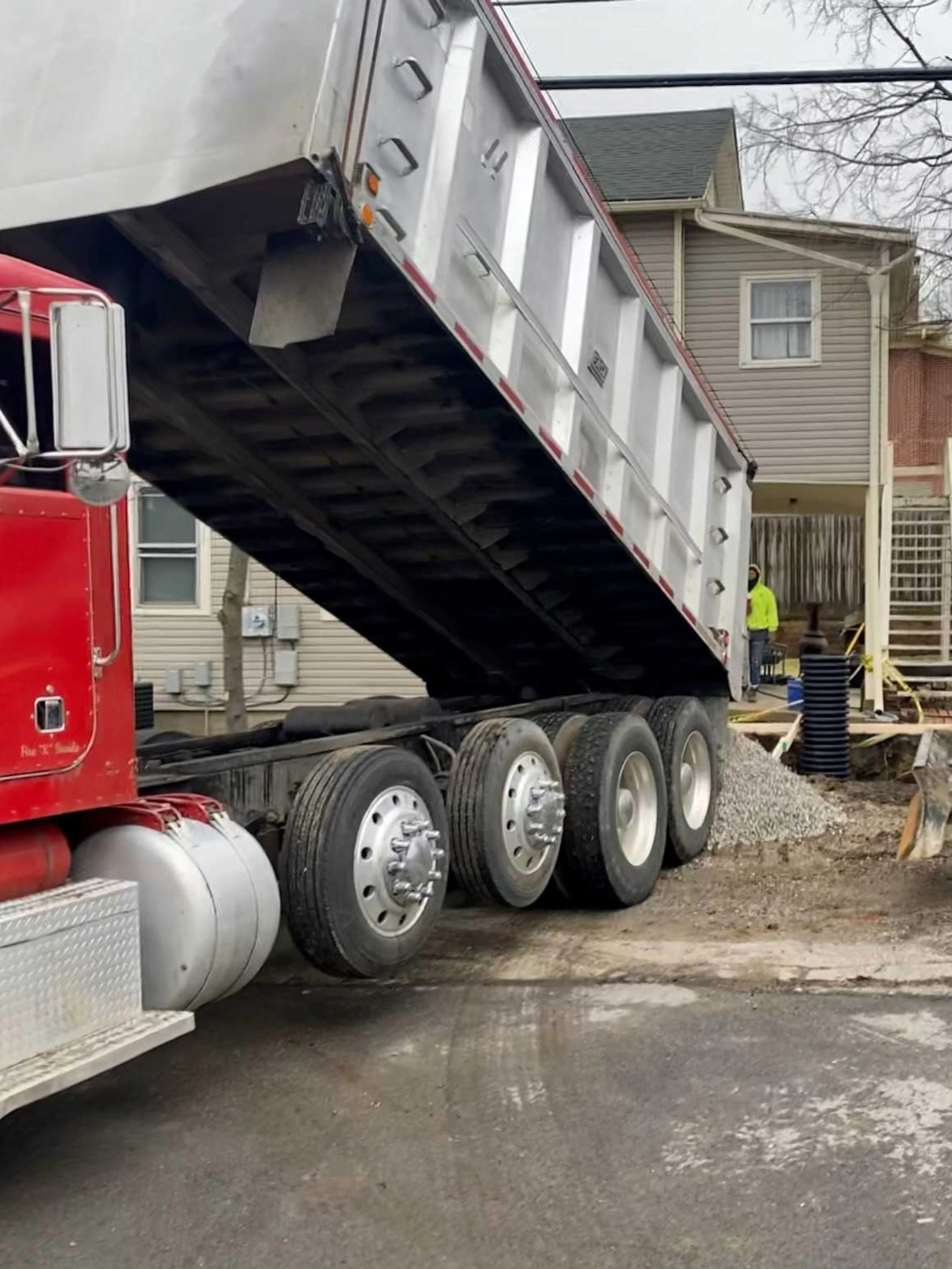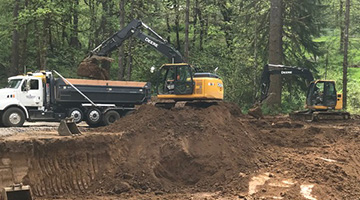Excavating Ohio - Top Excavation Professionals for Ohio Projects
Introducing the Art of Excavation: Pro Tips for Safe and Effective Excavating
In the world of excavation, the proficiency of risk-free and efficient digging is an art form that calls for adherence, accuracy, and understanding to recognized practices. As dirt is turned and earth is relocated, the intricacies of excavation disclose themselves, requiring a keen understanding of tools, dirt structure, safety protocols, and ecological factors to consider. The competence needed to browse these aspects effectively can suggest the difference in between an effective excavation project and a possible catastrophe. By unraveling the layers of this detailed procedure, a world of understandings and methods awaits those looking for to raise their excavation abilities to new elevations.
Importance of Appropriate Devices
To guarantee the security and effectiveness of any kind of excavation task, making use of the ideal equipment is critical. Excavation jobs vary in range and complexity, ranging from small domestic landscaping tasks to massive building and construction tasks.
Excavators are essential pieces of machinery in any digging procedure. These functional devices can be found in numerous dimensions to fit different project needs. Tiny excavators are ideal for smaller sized jobs, while bigger excavators deal with extra considerable tasks effectively. Backhoes are one more necessary devices type, combining the functions of a loader and an excavator in one equipment. They are beneficial for jobs calling for versatility and maneuverability.
Bulldozers succeed in tasks that require pressing large amounts of dirt or debris. By investing in the ideal devices, excavation jobs can be completed safely, on time, and with accuracy.
Understanding Soil Make-up
A thorough grasp of dirt composition is fundamental for performing excavation jobs with precision and security. Comprehending the various kinds of soil is vital as it straight affects excavation approaches, equipment option, and total task performance.
Sand fragments are the largest and supply great drain however provide little cohesion. Silt particles are smaller sized than sand however bigger than clay, providing modest drainage and cohesion. Clay particles are the tiniest and provide high communication yet bad drain. Organic matter, such as decomposing plant material, impacts soil fertility and stability.
Before starting excavation, carrying out soil examinations to establish its structure and qualities is necessary. This info assists in choosing the appropriate tools, carrying out safety actions, and developing excavation methods tailored to the details soil problems - lancaster trenching. By comprehending soil make-up, excavation professionals can boost project end results while guaranteeing safety and adherence to ideal practices
Precaution and Methods
Comprehending dirt structure is the keystone upon which safety and security steps and methods for excavation projects are constructed, guaranteeing the wellness of employees and the success of the endeavor. When it comes to safety throughout excavation, there are a number of crucial steps that have to be carried out to minimize threats and avoid crashes.
Primarily, prior to any digging begins, an extensive evaluation of the site must be performed to recognize any potential dangers such as underground utilities, unstable soil conditions, or nearby structures that can posture a threat. It is essential to have a proficient individual manage the excavation procedure to ensure that all safety protocols are followed purely.
In addition, all workers included in the excavation has to be properly learnt risk-free excavating techniques and the correct operation of devices. Personal protective tools (PPE) such as hard hats, high visibility garments, handwear covers, click reference and safety and security boots must be used in any way times to decrease the threat of injuries. lancaster excavation. Routine security meetings and toolbox talks need to also be carried out to keep all employees informed about prospective dangers and enhance secure job techniques. By sticking to these security procedures and procedures, excavation jobs can be completed effectively and without event.
Effective Excavation Preparation
When embarking on an excavation job, precise preparation is necessary to ensure performance, safety, and effective outcomes. Efficient excavation planning involves several vital steps that are critical for the smooth implementation of the task.
Once the site analysis is complete, the following action is to produce a clear timeline and timetable for the excavation activities. This includes establishing the sequence of jobs, tools requirements, and workforce allocation. Proper organizing aids avoid delays and makes certain that the task stays on track.

Furthermore, interaction amongst all staff member is extremely important throughout the preparation stage. Clear directives, normal updates, and effective control are necessary for a successful excavation job. By spending effort and time in meticulous planning, excavation groups can considerably enhance productivity, reduce dangers, and accomplish successful outcomes.

Handling Environmental Factors To Consider
With boosting emphasis on ecological sustainability in building practices, taking care of ecological considerations has actually become an essential element of excavation projects. Excavation tasks have the potential to influence the surrounding atmosphere via dirt erosion, debris overflow, environment interruption, and contamination of water sources. To alleviate these risks, it is important to implement finest practices that prioritize ecological security.

Additionally, correct waste monitoring is important to avoid soil and water contamination. Applying procedures click to find out more for the disposal of dangerous products, recycling of waste materials, and reducing using damaging chemicals can substantially decrease the environmental impact of excavation projects. By integrating these techniques right into excavation planning and execution, construction firms can ensure that their tasks are not just risk-free and productive yet additionally ecologically responsible.
Conclusion
Finally, understanding the art of excavation needs a complete understanding of appropriate equipment, dirt structure, precaution, and reliable planning. By following these standards and thinking about environmental elements, excavations can be carried out securely and successfully. It is critical to prioritize security and productivity in every excavating project to make certain effective outcomes.
As dirt is turned and planet is moved, the intricacies of excavation disclose themselves, demanding an eager understanding of devices, dirt composition, safety and security procedures, and ecological considerations.To make certain the security and efficiency of any type of excavation project, using the appropriate devices is extremely important.An extensive understanding of soil make-up is fundamental for carrying out excavation projects with precision and safety and security. Understanding the various types of soil is important as it straight influences excavation approaches, equipment option, and overall job performance. By understanding soil make-up, excavation experts can boost project outcomes while making sure safety and security and adherence to best methods.